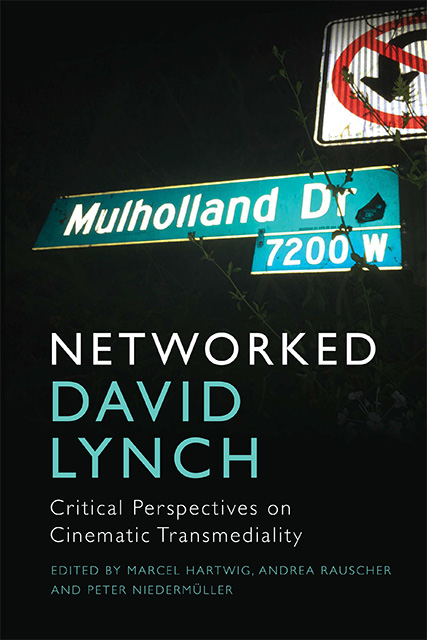Book contents
- Frontmatter
- Contents
- List of Figures
- Notes on Contributors
- Introduction: Entering Lynchtown
- Part I Approaching Intertexts
- Part II Twin Peaks as Transmedia Network
- Part III David Lynch's Transmedia Aesthetics
- Part IV Videographic Criticism of David Lynch’s Cinematic Work
- Conclusion: Leaving Lynchtown
- Index
Chapter 5 - ‘Is it future or is it past?’ Visual Effects in Twin Peaks: The Return
Published online by Cambridge University Press: 19 October 2023
- Frontmatter
- Contents
- List of Figures
- Notes on Contributors
- Introduction: Entering Lynchtown
- Part I Approaching Intertexts
- Part II Twin Peaks as Transmedia Network
- Part III David Lynch's Transmedia Aesthetics
- Part IV Videographic Criticism of David Lynch’s Cinematic Work
- Conclusion: Leaving Lynchtown
- Index
Summary
Introduction
The much-anticipated third season of Twin Peaks (2017) marks the first time David Lynch has made extensive use of computer-generated imagery (CGI) in a film or series. During his eleven-year hiatus from film and television, the technical aspects of film production have changed significantly. Over the course of the 1990s and 2000s, CGI had become mainstream in big-budget movies, but remained a rarely used tool in low- or mediumbudget productions. During the 2010s, the use of CGI became feasible even for low-budget film productions. A case in point is the science fiction film Ex Machina (Garland 2014), which won the 2016 Oscar for ‘Best Visual Effects’ with a budget of only $15,000,000 against contenders such as Star Wars: The Force Awakens (Abrams 2015), The Martian (Scott 2015) and Mad Max: Fury Road (Miller 2015). Digital technologies have advanced to a point where photorealistic visual effects are everywhere, regardless of a production's size or budget.
Lynch, who was very outspoken about the creative freedom brought by the use of digital cameras in Inland Empire (Lynch 2006; Todd 2012: 129; Lynch and McKenna 2019: 435), was now able to add CGI to this newfound liberty. CGI enables the filmmaker to manipulate or generate images independently, separate from the confines of the film set and shooting schedules. During post-production, digital technology allows the filmmaker to change a scene over and over again until satisfied. With a reportedly high budget for Twin Peaks: The Return (Lynch and McKenna 2019: 477, 499), audiences could assume high-standard visual effects for a TV-series from 2017.
The effects, however, were controversial. As Sébastien Chauvin wrote in his Cahiers du Cinéma article on Twin Peaks: The Return, the visual effects were ‘[…] one of the big surprises of season 3’ (Chauvin 2017: 22). On the pop culture blog Polygon, Julie Muncy writes: ‘What's most striking about all these special effects, however, isn't their content, but their composition: Most of them are terrible’ (2017: n.p.). The conflict seems to arise between the aesthetic expectations for visual effects on the one hand, and David Lynch's artistic style on the other hand.
- Type
- Chapter
- Information
- Networked David LynchCritical Perspectives on Cinematic Transmediality, pp. 78 - 97Publisher: Edinburgh University PressPrint publication year: 2023



